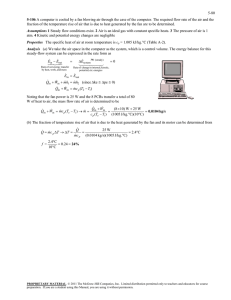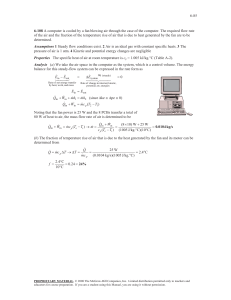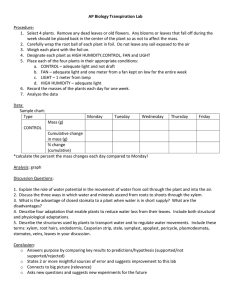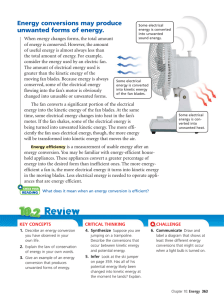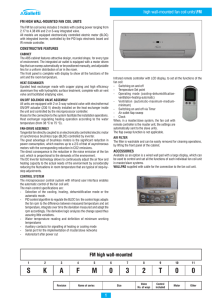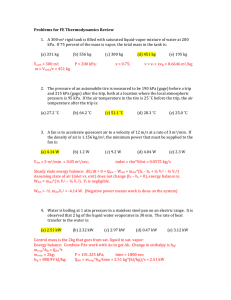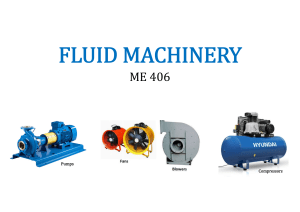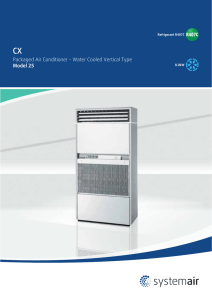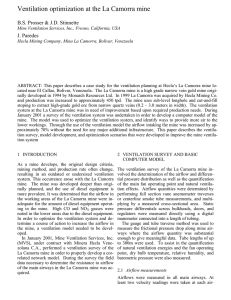5-47 she comes back 10 h later is to be determined. 2
advertisement
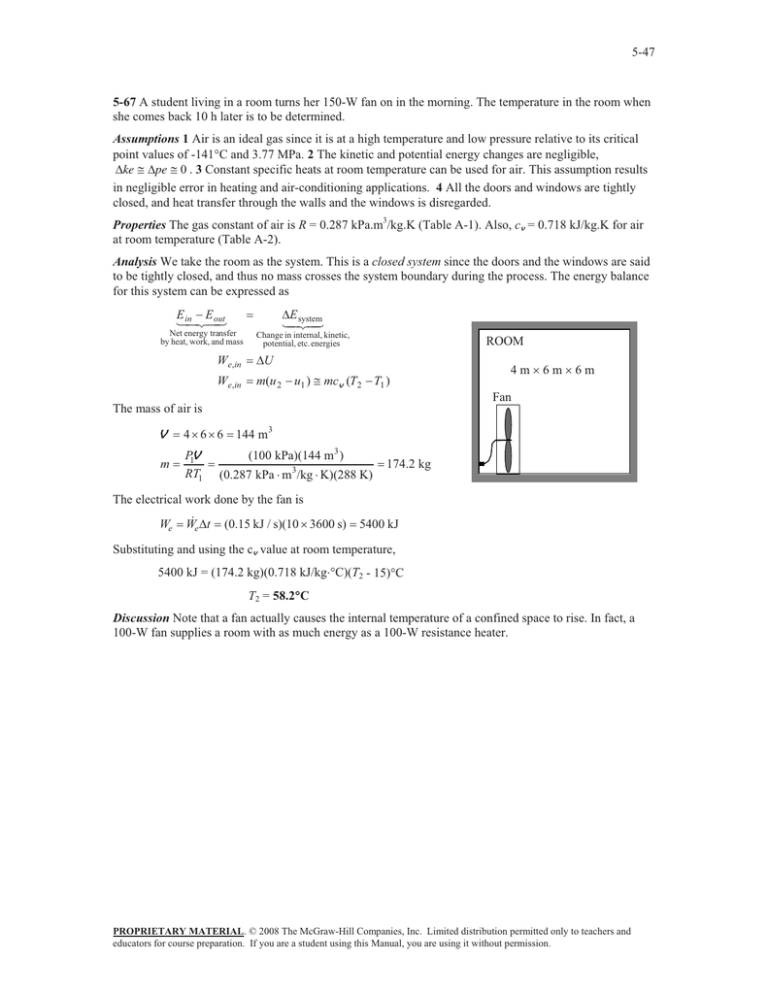
5-47 5-67 A student living in a room turns her 150-W fan on in the morning. The temperature in the room when she comes back 10 h later is to be determined. Assumptions 1 Air is an ideal gas since it is at a high temperature and low pressure relative to its critical point values of -141qC and 3.77 MPa. 2 The kinetic and potential energy changes are negligible, 'ke # 'pe # 0 . 3 Constant specific heats at room temperature can be used for air. This assumption results in negligible error in heating and air-conditioning applications. 4 All the doors and windows are tightly closed, and heat transfer through the walls and the windows is disregarded. Properties The gas constant of air is R = 0.287 kPa.m3/kg.K (Table A-1). Also, cv = 0.718 kJ/kg.K for air at room temperature (Table A-2). Analysis We take the room as the system. This is a closed system since the doors and the windows are said to be tightly closed, and thus no mass crosses the system boundary during the process. The energy balance for this system can be expressed as E E in out Net energy transfer by heat, work, and mass 'E system Change in internal, kinetic, potential, etc. energies ROOM We,in 'U We,in m(u 2 u1 ) # mcv (T2 T1 ) 4mu6mu6m Fan The mass of air is V 4u6u6 m P1V RT1 144 m3 (100 kPa)(144 m3 ) (0.287 kPa m3/kg K)(288 K) 174.2 kg The electrical work done by the fan is We We 't (0.15 kJ / s)(10 u 3600 s) 5400 kJ Substituting and using the cv value at room temperature, 5400 kJ = (174.2 kg)(0.718 kJ/kgqC)(T2 - 15)qC T2 = 58.2qC Discussion Note that a fan actually causes the internal temperature of a confined space to rise. In fact, a 100-W fan supplies a room with as much energy as a 100-W resistance heater. PROPRIETARY MATERIAL. © 2008 The McGraw-Hill Companies, Inc. Limited distribution permitted only to teachers and educators for course preparation. If you are a student using this Manual, you are using it without permission.
